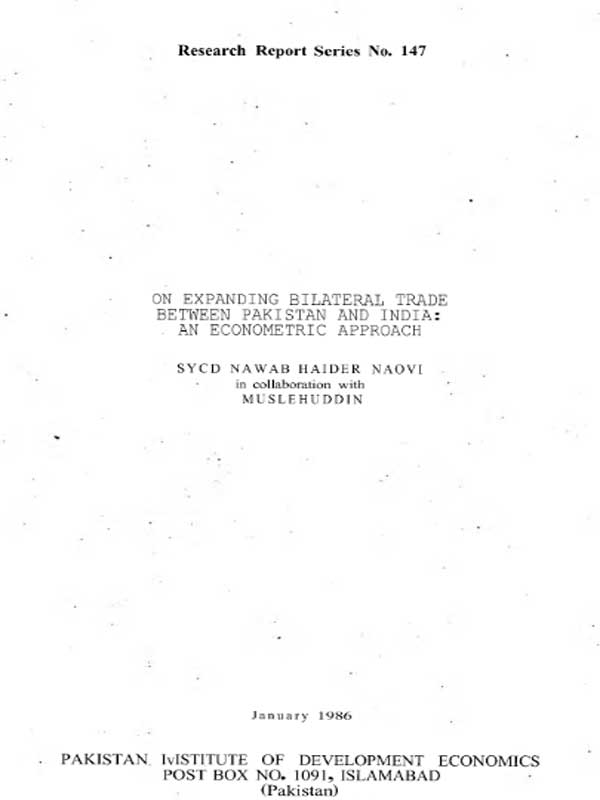
Pakistan Institute of Development Economics
- Home
Our Portals
MenuMenuMenuMenuMenuMenuMenu - ResearchMenuMenuMenuMenuMenuMenuMenu
- Discourse
- The PDR
- Our Researchers
- Academics
- Degree Verification
- Thesis Portal
- Our Portals
On Expanding Bilateral Trade Between Pakistan And India: An Econometric Approach
Introduction
Regional trade expansion has been recognized as promoter of economic growth in developing countries. This is true even if regional grouping leads to some trade diversion. This is because, in view of the rising protectionist sentiments in the developed countries the developing countries are finding it increasingly difficult to expand trade with them. Hence the need for mutual economic co-operation among the develop¬ ing countries, focusing mainly on expanding intra-regional trade. An attempt has been made in this paper to provide an analytical framework for studying trade relations between Pakistan and India and for exploring the possibilities of changing the existing situation through a conscious policy action. Notwithstanding severe data problems, the quantitative approach developed here enables us to look back on the past with dissatisfaction and towards the future with reasonable hope. For whatever reasons, trade between Pakistan and India has remained very small despite an immense potential for promoting bilateral trade. As should be clear from Table 1, bilateral import flows have exhibited wide fluctuations. While imports of Pakistan from India grew at a com¬ pound growth rate of 5.39 percent during the 1967-1971 period, imports of India from Pakistan declined by.73.84 percent during the same period. However, during the five-year period from 1972 to 1976 imports of the two countries from each other grew appreciably: while Pakistan’s imports from India rose at a compound growth rate of 183.96 percent, Indian imports from Pakistan grew by 262.27 percent. Then, from 1977 to 1981, India’s imports from Pakistan grew at a compound rate of 12.04 percent, while Pakistan’s imports from India declined sharply by 58.24 percent.
For Full Text Download PDF



